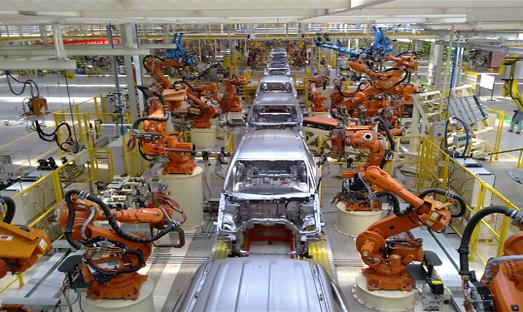RPA (Robotic Process Automation)
Hi all, after a long long time. This time it is nothing technical. Just wanted to share my thoughts and experience about RPA (Robotic Process Automation), the new trend in the industry.
Now, if you are a newbie, who hasn’t heard about Chatbots or automation, specially QA automation, you may be thinking about robots engaged in physical tasks. But, if that’s the case, Robots are not something new, it has been one hot topic for decades. This should be something different. Is this something about AI (Artificial Intelligence) which is so complex and hard to understand? Those were my thoughts, when I first heard the name, RPA. I am sure, you are having same thoughts. But, to be honest RPA is not a very complex as the name sounds. Let’s have some idea about this cool technology.

When we take a manufacturing company (e.g: Car manufacturer, Water bottle producer) there are machines which does almost everything that can be done by a human. Those devices are programmed and mechanically designed to perform physical tasks. Hence those act as physical robots which handles physical operations. The companies can have higher production rate and better profit margins as the automated systems help to minimize error and save time.
The concept of RPA also about automating processes as in above scenario, but with a different target. Instead of targeting physical processes where humans are involved; assembling a vehicle, filling water to bottles, etc. RPA targets logical processes as below.
- Use several data sources and create a daily report and mail to respective personals
- Navigate to a site and register a user online
- Send a reorder request to suppliers, when inventory reorder level is reached, etc.
These are also processes which are done by humans. But, they are performed on software and input/output of these processes are intangible. Of course, you can produce tangible output, if you direct the output (e.g. word document prepared) to a printer queue. Or else, you can connect a physical robot and RPA tool to deal with tangible inputs and outputs. Well, that’s something for you to think later. Let’s try to catch up on RPA.

How to select a RPA candidate..?
Well if you are going to apply RPA to you business, here are few things you need to consider. Selection should be done carefully, as a bad decision may result in a loss.
- One should be able to define a clear business logic to the process in detail manner.
- The selected process involves a boring repetitive task, which takes considerable time and human effort, which can be reduced if automated.
- The process doesn’t involve expertise decision making.
- Expected input, output are not physical (Well you can be creative and make a difference… 🙂 )
- There aren’t any human interventions (e.g. approvals or reviews of authorized personals) in the middle of the process, as this may delay the expected outcomes.
Are there anything important, before we jump into RPA…?
Suppose, you selected a process to automate, but it would be better if you could ask these questions yourself.
- Do we have stable, well functioning applications?
- Is the process selected involves UI mimicking? If so, are there any loading issues on the applications, frequent breakdowns or any issues in our current application UI?
- Can’t we go for API based solutions rather than going for UI mimicking, as it is a software interaction? (Well this would help to speed up the process, as it is going to omit almost all the steps that you are going to do on UI)
- Will there be any changes in the application UI to the future? Will the team change the logic and the layout of the report we are going to generate?
Note: It is not a good idea to pick a process which involves frequent changes, as this may result in a waste of money and effort.
What about good and bad of RPA?
So far, so good.. as long as you are ready to fulfill above criteria, as a company you can save a lot.
- Reduce human error and gain accuracy and effectiveness.
- Speed up processes (computers wouldn’t want to go for lunch or have chit chats as us…;) )
- Cut down cost involved due to a large work force.
- Release of expertise from their boring, repetitive tasks and give them time to concentrate on decision making and direct the company towards success.
But there are few risks as well.
- When the automation is functioning successfully and excess staff, who were engaged in selected processes are removed or assigned to different areas, the company will lack employees who knows in and out of these processes.
- If the tool or technology used to automate the processes is not stable and well designed, there is a high chance of getting everything messed up, rather than having a gain.
Well, that’s pretty much about RPA. Whoa, quite long right. Hope, I could shed some light on what is RPA and why it has become so popular. This is just sharing my ideas about RPA. Any suggestions and comments are always welcome.
Till I come up with something new, have a good time people….:)